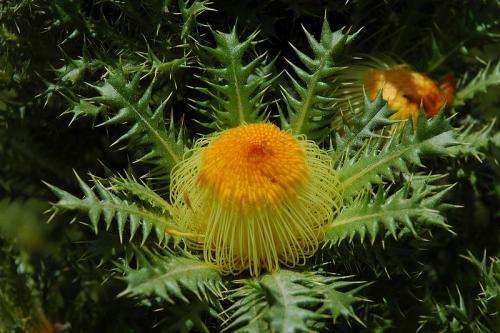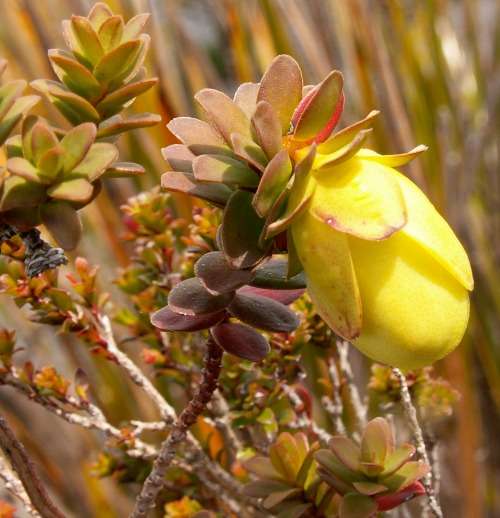Stirling Range flora nears extinction

The soil-borne water mould Phytophthora cinnamomi (dieback) has rendered unique vegetation on the peaks of the Stirling Ranges in the Great Southern to the point of being critically endangered.
Regarded as "biological islands", these peaks are 80 per cent composed of Montane Heath and Thicket, which contains endemic species including Giant Andersonia (Andersonia axilliflora), Banksia montana and the Yellow Mountain Bell (Darwinia collina).
The Departments of Parks and Wildlife Perth and Albany conservation assessment utilised the IUCN Red List criteria for ecosystems and found that disease, changing fire regimes and restricted geographical distribution made for an uncertain future.
"The most significant threat is Phytophthora dieback," according to study co-authors Sarah Barrett and Dr Colin Yates.
"[This] was first noted in the Stirling Range National Park by CSIRO researchers in 1974 and since then the pathogen has spread to many of the peaks through the transport of infested soil, mainly by foot access.
"Infestations high in the landscape have led to considerable down-slope spread in broad fronts and extensive infestation of the Montane Heath and Thicket."
This is significant given that many of the ecosystem's species are susceptible to the pathogen, which thrives in the humid montane conditions and shallow soils.
Using historical data and long-term monitoring, the researchers found a striking change in ecosystem composition, including local extinctions or severe reductions of defining plant species Progeaceae, Ericaceae and Fabaceae.

Mapping shows only 14 per cent of the area has retained its historic distribution, with dieback-susceptible species declining by 34 per cent in the last two decades alone.
Fire frequency over the past 50 years has also increased, with 74 per cent of the ecosystem experiencing a fire interval of only nine years.
The researchers say this is at the lower- to mid-bounds of thresholds of collapse for non-spouting species, which recover from seed—a worrisome trend in light of climate change models which suggest fire will continue to increase.
If the climate on the peaks shifts from their usual low temperatures and high humidity to projected warmer and drier conditions, vulnerable species will have virtually no ability to move to more suitable environments.
Ms Barrett and Dr Yates say while there is no way to eliminate dieback the continued use of the fungicide phosphite can protect vulnerable plants for two year when sprayed aerially and it is non-toxic to animals.
Initiatives are currently underway to collect seeds and relocate vulnerable species from the region.
More information: "Risks to a mountain summit ecosystem with endemic biota in southwestern Australia." Austral Ecology. doi: 10.1111/aec.12199
Provided by Science Network WA




















